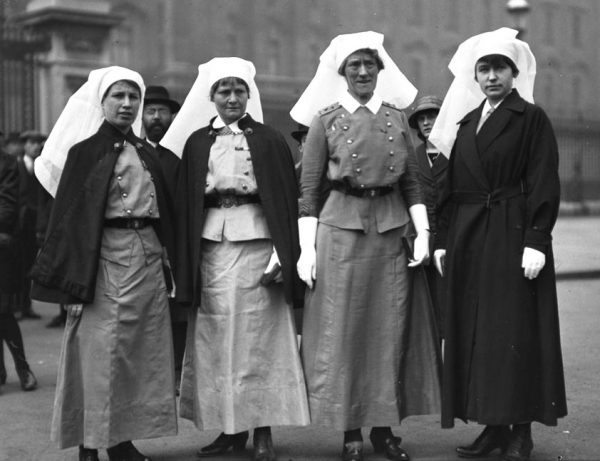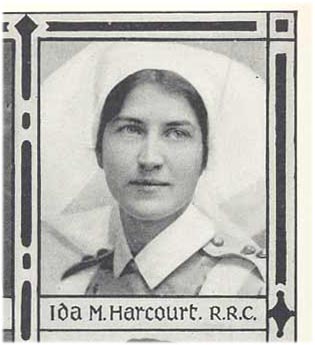This too shall pass. As we are all challenged today by the COVID-19 virus, the Way Back Wednesday series will look back at past epidemics and health challenges, with a particular focus on those individuals who sought to aid the sick, and on how our landscape remembers those past times.
Apart but together, please help us capture the story of how COVID-19 pandemic has affected you here in Mississauga. Please share stories and images at [email protected] or https://www.facebook.com/HeritageMississauga
#ApartTogether

May 11-17, 2020 is National Nursing Week in Canada, and the World Health Organization has declared 2020 as The International Year of the Nurse and the Midwife, as 2020 marks the 200th birth anniversary of Florence Nightingale. She became known for her work in caring for casualties during the Crimean War and her visionary advancement for the nursing profession. Tying into the theme of Nursing Week, this week’s article will remember the remarkable story of the “bluebirds”, the Nursing Sisters from the First World War.
From 1914-1918, during the First World War, the volunteers came from all over Canada, the average age just under 29 years old. They served throughout the war, called by a sense duty, patriotism, or adventure.
Approximately 100 nurses sailed with the first contingent of the Canadian Expeditionary Force in late 1914. By the end of the war some 2,854 Nursing Sisters had enlisted in the CEF under the Canadian Army Medical Corps, with 2,411 serving overseas. Others enlisted with the British Army, and still others, without nursing training, served as Voluntary Aid Dispensers. These women served in hospitals in England, France, the Eastern Mediterranean, and aboard numerous Hospital Ships, tending to a massive number of casualties during, and after, the First World War. They also had casualties of their own: 46 Canadian Nursing Sisters lost their lives during the war. Of these, 22 died of disease, many of whom succumbed to the Spanish Flu in 1918-1919 as it ravaged the military hospitals at the close of the First World War.

The 2,854 nurses who served in the Canadian Army Medical Corps were fully-enlisted officers in the specially-created female rank of Nursing Sister, with relative rank and equal pay to men. They were nicknamed “bluebirds” because of their blue uniforms and white veils.
The nurses were required to be trained nurses before enlistment. The nurses were also required to have British citizenship, to possess high moral character, physical fitness, and be between the ages of 21 and 38. Many of the nurses had brothers or fathers serving in the Canadian Expeditionary Force.

The Nursing Sisters did not work on the front lines, although hospitals and clearing stations were often in close proximity. As patients arrived, nurses were among the first to meet wounded soldiers, administering pain medication, tetanus vaccines, cleaning wounds, and offering comfort. They cared for wounds daily, bandaging and re-bandaging injuries, and fighting infections. They also nursed soldiers through dysentery, trench fevers, pneumonia, and, of course, the Spanish Flu pandemic of 1918-20.
At least three nurses from historic Mississauga joined the Canadian Army Medical Corps. They were Nursing Sisters Mary Susan (Susie) Denham Beaty of Streetsville, Mary Edith Crickmore of Clarkson, and Ida Mary Harcourt of Streetsville.
Susie Beaty (1875-1962) was born in Streetsville and enlisted in Montreal on June 3, 1915 as a Graduate Nurse. She sailed overseas in August of 1915. She served in England and France with the Number 3 Canadian General Hospital, Number 21 Casualty Clearing Station, Number 2 Canadian General Hospital, Beach Hill Hospital, and with the Canadian Army Medical Corps Regimental and Training Depot, amongst other postings. She returned to Canada in July of 1919.
Mary Crickmore (1889-1961) was born in Clarkson, daughter of Minnie and Edwin Crickmore. She enlisted on February 11, 1918, and was stationed in Toronto at the Davisville Military Hospital, the Spadina Military Hospital and the St. Andrews Military Hospital from 1918 until 1920.

Ida Harcourt (1890-1983) was born in Streetsville and enlisted at the Base Hospital in Toronto on June 27, 1917. Ida left Canada for England on June 25, 1918 and was posted to Number 11 Canadian General Hospital in Bramshott and Number 16 General Hospital in Orpington. Ida contracted influenza in November of 1918, but was cleared to return to duty two weeks later, likely falling ill through her treatment of soldiers suffering from the Spanish Flu. She returned to Canada on board the SS Megantic, on August 15, 1919. For her service, Ida was awarded the Royal Red Cross Medal, 2nd Class.
We remember their brave and selfless service.
Background information for this article from Canadian War Museum, the Canadian Great War Project, the Canadian Encyclopedia,From Medicine Man to Medical Man by William Perkins Bull, and from Library and Archives Canada. The research into local connections to the Nursing Sisters of the Canadian Army Medical Corps during the First World War is ongoing.
NOTE: This story was previously published as part of the Way Back Wednesday series in Modern Mississauga by Heritage Mississauga.
It can be found on their website here: https://www.modernmississauga.com/main/2020/5/13/the-history-of-mississaugas-remarkable-nursing-sisters



Comments are closed.